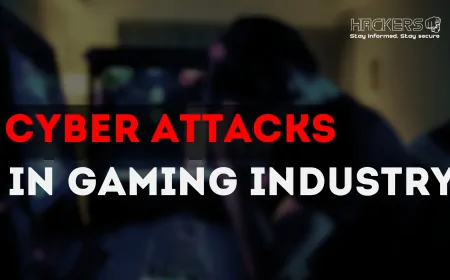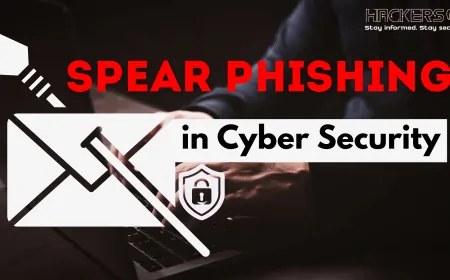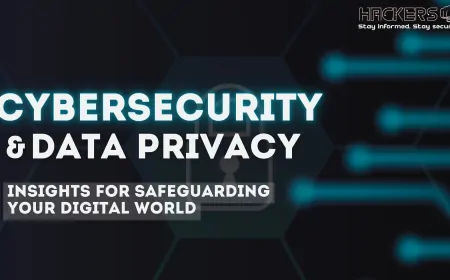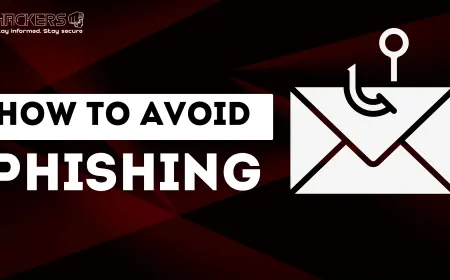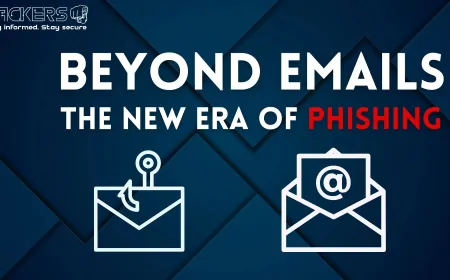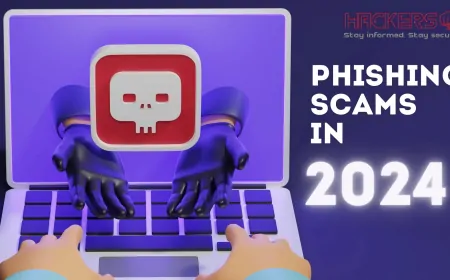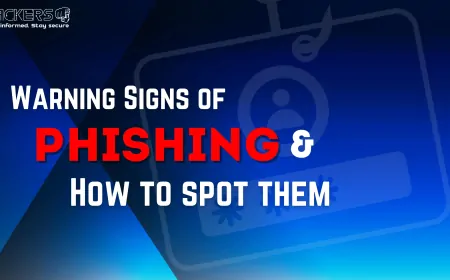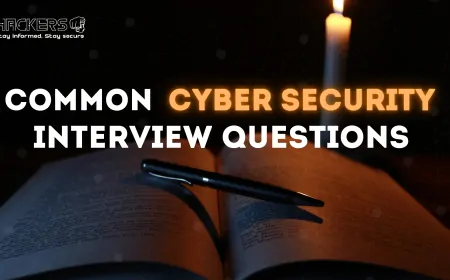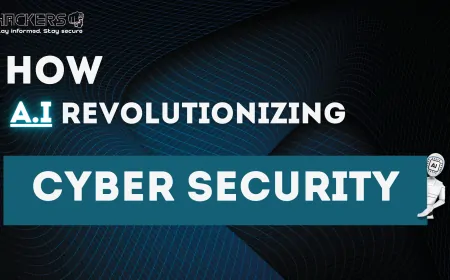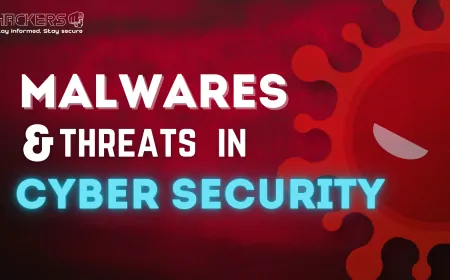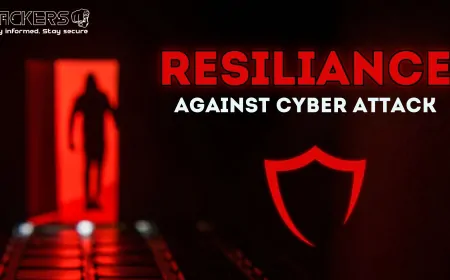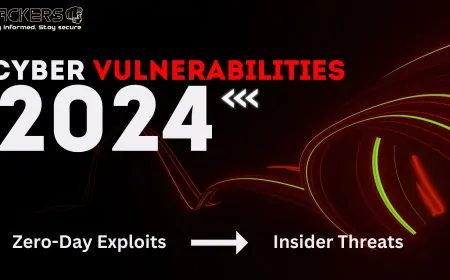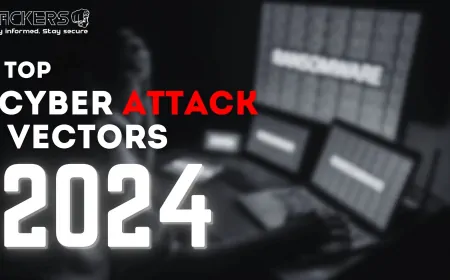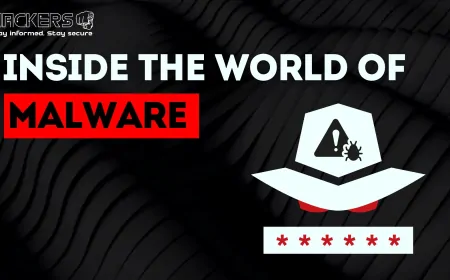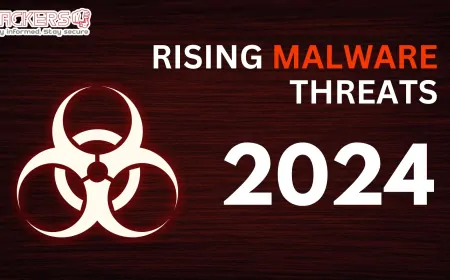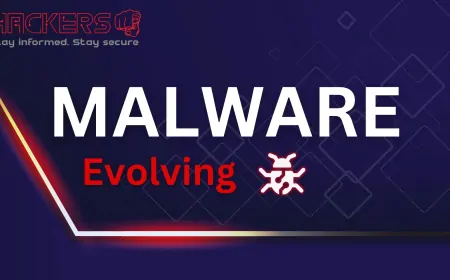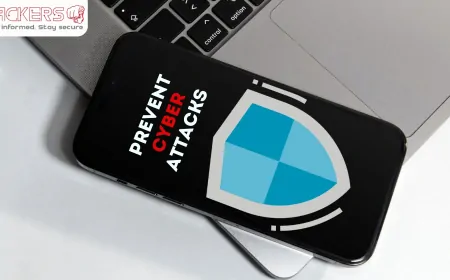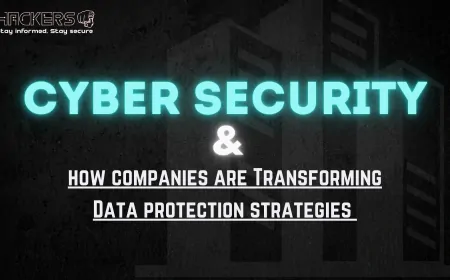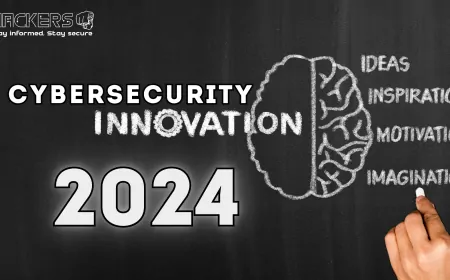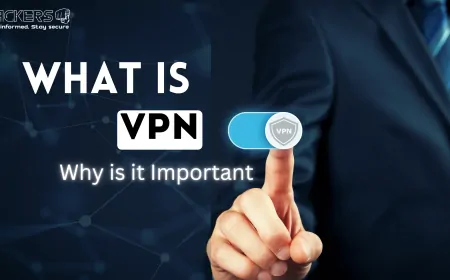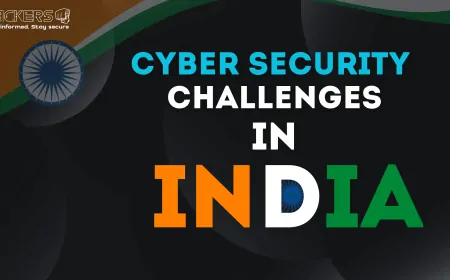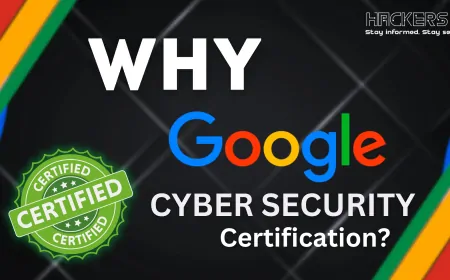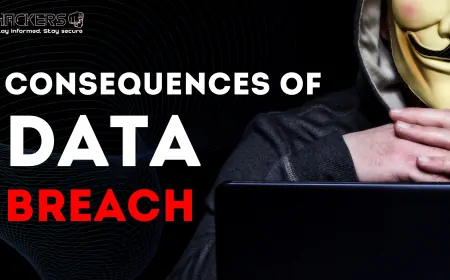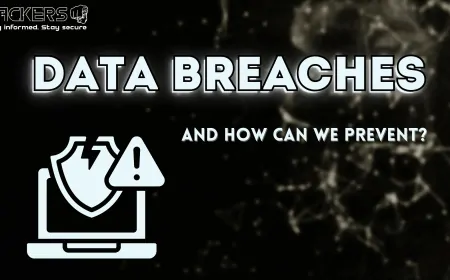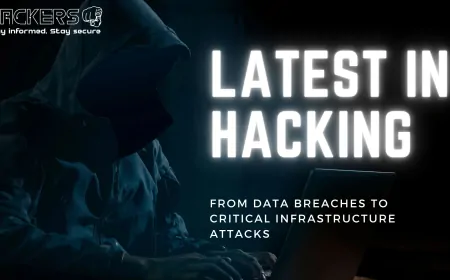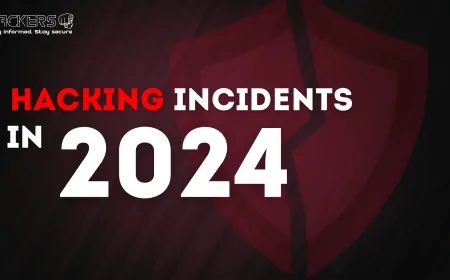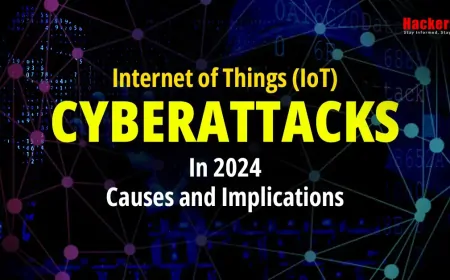Why Cybersecurity Certifications Matter in Today’s World
Discover why cybersecurity certifications are crucial in today’s digital landscape. Learn how they demonstrate expertise, keep professionals updated on evolving threats, enhance career prospects, and help organizations meet regulatory requirements. Explore the key benefits and impact of certifications on career growth and cybersecurity effectiveness.

Introduction
In an era marked by rapid technological advancements and escalating cyber threats, cybersecurity certifications have become increasingly vital. These certifications not only validate expertise but also provide several key benefits that make them essential for both professionals and organizations.
In a world increasingly driven by digital technology, the importance of cybersecurity cannot be overstated. As cyber threats become more sophisticated and pervasive, the demand for skilled cybersecurity professionals has surged. This is where cybersecurity certifications come into play. These credentials are not just a testament to an individual's knowledge and skills but also a crucial asset for navigating the complex and ever-evolving landscape of cybersecurity. This article explores why cybersecurity certifications are essential in today’s world, examining how they validate expertise, ensure up-to-date knowledge, and contribute to career advancement and organizational security.
Rising Cyber Threats
As technology advances at an unprecedented rate, so too do the threats posed by malicious actors in the cyber realm. From sophisticated ransomware attacks to intricate phishing schemes, the landscape of cyber threats is continually evolving, presenting new challenges for individuals, businesses, and governments alike. Understanding these rising threats is crucial for developing effective strategies to protect against them and ensure digital security.
Emerging Cyber Threats
-
Ransomware Attacks
Ransomware continues to be one of the most significant threats in the cybersecurity landscape. Attackers encrypt a victim’s data and demand a ransom payment for the decryption key. Recent trends have seen ransomware attacks targeting critical infrastructure, healthcare systems, and large corporations, causing substantial operational disruptions and financial losses. The increasing sophistication of ransomware strains and the rise of ransomware-as-a-service models have made these attacks more accessible and dangerous.
-
Advanced Persistent Threats (APTs)
APTs are prolonged and targeted cyberattacks where attackers gain unauthorized access to a network and remain undetected for extended periods. These attacks are often carried out by well-funded and skilled adversaries, such as nation-states or organized crime groups. APTs are designed to steal sensitive information, disrupt operations, or cause long-term damage. They typically involve multiple stages, including initial infiltration, lateral movement, and data exfiltration.
-
Phishing and Social Engineering
Phishing remains a prevalent and effective method for cybercriminals to deceive individuals into revealing sensitive information. Modern phishing attacks often use sophisticated techniques, such as spear-phishing, where attackers tailor their messages to specific targets, and business email compromise (BEC), which involves spoofing legitimate business communications. Social engineering tactics exploit human psychology to manipulate individuals into making security mistakes, often leveraging current events or personal information.
-
IoT Vulnerabilities
The proliferation of Internet of Things (IoT) devices has introduced new vulnerabilities into the cybersecurity landscape. Many IoT devices lack robust security measures and can be exploited to gain unauthorized access to networks or launch attacks. The increasing number of connected devices in both consumer and industrial settings raises concerns about data privacy, device integrity, and the potential for large-scale IoT-based attacks.
-
Cloud Security Risks
As organizations increasingly adopt cloud services, the associated security risks are becoming more pronounced. Misconfigurations, inadequate access controls, and vulnerabilities in cloud platforms can lead to data breaches and unauthorized access. Cloud-based attacks can impact not only the security of stored data but also the availability and integrity of critical applications and services.
-
Supply Chain Attacks
Supply chain attacks target vulnerabilities in the software or hardware supply chain to compromise multiple organizations. By infiltrating a trusted vendor or partner, attackers can gain access to a broader network of targets. These attacks have been demonstrated in high-profile incidents, such as the SolarWinds breach, which highlighted the risks associated with relying on third-party software and services.
-
Artificial Intelligence and Machine Learning Threats
As artificial intelligence (AI) and machine learning (ML) technologies advance, they are being used both defensively and offensively in the cyber realm. Cybercriminals are leveraging AI to automate attacks, enhance phishing schemes, and create more convincing deepfakes. Conversely, organizations are using AI for threat detection and response, but this also raises concerns about potential vulnerabilities and misuse.
Strategies for Mitigation
-
Enhanced Security Practices
Adopting robust cybersecurity practices, such as multi-factor authentication, regular software updates, and network segmentation, is essential for mitigating rising threats. Organizations should implement comprehensive security policies and conduct regular security training for employees to reduce the risk of human error.
-
Advanced Threat Detection
Investing in advanced threat detection technologies, including AI-driven solutions, can help identify and respond to emerging threats more effectively. Continuous monitoring and analysis of network activity are crucial for detecting anomalies and potential breaches.
-
Incident Response Planning
Developing and regularly updating an incident response plan is vital for managing cyber incidents efficiently. Organizations should conduct simulated exercises to test their response capabilities and ensure that all stakeholders are prepared to handle potential security breaches.
-
Vendor and Supply Chain Security
Evaluating and managing the security posture of vendors and partners is critical to preventing supply chain attacks. Organizations should implement rigorous vetting processes and establish security requirements for third-party services.
-
Public and Private Sector Collaboration
Strengthening collaboration between public and private sectors is essential for addressing cyber threats. Information sharing, joint initiatives, and coordinated responses can enhance collective cybersecurity efforts and improve resilience against emerging threats.
Technology Dependence
In the modern world, our reliance on technology is more profound than ever. From the smartphones we use daily to the sophisticated systems that power businesses and critical infrastructure, technology has become an integral part of our lives. This dependence has brought about significant benefits, such as increased efficiency, connectivity, and access to information. However, it also presents various risks and challenges that need to be addressed. Understanding the implications of technology dependence is crucial for managing its impact and ensuring that we harness its advantages while mitigating potential drawbacks.
Career Benefits of Cybersecurity Certifications
- Increased Job Opportunities: Certifications open doors to a wide range of cybersecurity roles.
- Higher Earning Potential: Certified professionals often command higher salaries.
- Skill Validation: Demonstrates expertise and knowledge to employers.
- Career Advancement: Enhances opportunities for promotions and career growth.
- Industry Recognition: Builds credibility and respect in the cybersecurity field.
Popular Cybersecurity Certifications
| Certification | Description | Ideal For |
|---|---|---|
| CompTIA Security+ | Basic certification covering core security concepts. | Entry-level professionals |
| Certified Ethical Hacker (CEH) | Focuses on penetration testing and ethical hacking skills. | Intermediate-level professionals |
| Certified Information Systems Security Professional (CISSP) | Advanced certification for experienced security practitioners. | Senior security roles |
| Certified Information Security Manager (CISM) | Focuses on management and governance of information security. | Security managers and consultants |
| Certified Information Systems Auditor (CISA) | Emphasizes auditing and control of information systems. | IT auditors and security professionals |
| Certified Cloud Security Professional (CCSP) | Specializes in cloud security principles and practices. | Cloud security professionals |
| Offensive Security Certified Professional (OSCP) | Advanced penetration testing and ethical hacking certification. | Experienced security testers |
| CompTIA Cybersecurity Analyst (CySA+) | Focuses on threat detection and response skills. | Mid-level security analysts |
| Certified in Risk and Information Systems Control (CRISC) | Focuses on risk management and control within IT systems. | Risk management professionals |
| GIAC Security Essentials (GSEC) | Covers a broad range of security topics for general understanding. | General IT professionals |
Getting Started With Cybersecurity Certifications
-
Assess Your Career Goals: Determine your career objectives and which cybersecurity roles interest you. This will help you select the most relevant certification.
-
Research Certification Options: Explore various certifications and their requirements. Consider factors such as the level of difficulty, cost, and the skills covered. Popular entry-level certifications include CompTIA Security+ and Certified Ethical Hacker (CEH), while advanced options include Certified Information Systems Security Professional (CISSP) and Offensive Security Certified Professional (OSCP).
-
Choose a Certification: Based on your research, select a certification that aligns with your career goals and current skill level. For beginners, certifications like CompTIA Security+ are ideal, while experienced professionals might opt for CISSP or OSCP.
-
Prepare for the Exam: Gather study materials, such as official guides, online courses, and practice exams. Join study groups or forums to enhance your learning and gain insights from others who have already achieved the certification.
-
Register for the Exam: Schedule your exam through the certification body’s official website. Ensure you meet all prerequisites and review the exam format and content outline.
-
Take the Exam: Follow the preparation plan and complete the exam on the scheduled date. Stay calm and focused during the test.
-
Leverage Your Certification: Once certified, update your resume and LinkedIn profile. Use your new credentials to seek job opportunities, promotions, or additional responsibilities in cybersecurity.
-
Continuous Learning: Stay updated with the latest cybersecurity trends and threats. Consider pursuing additional certifications or specialized training to further enhance your skills and career prospects.
Conclusion
Embarking on a journey with cybersecurity certifications can be a transformative step for advancing your career in the dynamic field of cybersecurity. By carefully selecting a certification that aligns with your career goals and skill level, investing time in thorough preparation, and leveraging the credential to enhance your professional profile, you position yourself for success. Continuous learning and staying updated with the latest industry trends will further strengthen your expertise and open doors to new opportunities. In an era where cybersecurity is increasingly crucial, these certifications not only validate your skills but also demonstrate your commitment to safeguarding digital assets and advancing your career in this vital field.
Frequently Asked Questions (FAQs)
1. What are cybersecurity certifications?
Cybersecurity certifications are formal credentials that validate an individual’s expertise in specific areas of cybersecurity. They demonstrate your knowledge and skills, enhancing your professional credibility.
2. Why are cybersecurity certifications important?
Certifications are crucial because they validate your skills and knowledge, making you more competitive in the job market. They also aid in career advancement, potentially increase earning potential, and provide industry recognition.
3. Which cybersecurity certification should I start with?
Beginners should consider starting with CompTIA Security+, which covers essential cybersecurity concepts. For those with more experience, advanced certifications like Certified Ethical Hacker (CEH) or Certified Information Systems Security Professional (CISSP) are suitable options.
4. How do I prepare for a cybersecurity certification exam?
Preparation involves using official study guides, enrolling in online courses, taking practice exams, and participating in study groups. Hands-on experience and practical exercises are also beneficial.
5. How much do cybersecurity certifications cost?
Costs vary by certification. Entry-level certifications like CompTIA Security+ generally cost around $300, while advanced certifications such as CISSP or OSCP can range from $500 to $1,000 or more. Additional expenses may include study materials and exam retake fees.
6. How long does it take to prepare for a certification exam?
Preparation time depends on your existing knowledge and experience. On average, it can take several weeks to a few months. A well-structured study plan can help optimize your preparation time.
7. Are cybersecurity certifications required for a career in cybersecurity?
While not always mandatory, certifications are highly valued and often preferred by employers. They demonstrate your commitment and expertise, which can be essential for career growth and specialized roles.
8. How long is a cybersecurity certification valid?
Most certifications are valid for three to five years. To maintain your certification, you may need to complete continuing education requirements or pass a renewal exam.
9. Can I pursue multiple certifications?
Yes, pursuing multiple certifications can broaden your skill set and improve career opportunities. Many professionals choose to obtain several certifications to cover different areas of cybersecurity.
10. Where can I find study materials for certification exams?
Study materials are available through official certification websites, online course providers, and bookstores. Many organizations also offer practice exams and training courses tailored to each certification.
What's Your Reaction?







